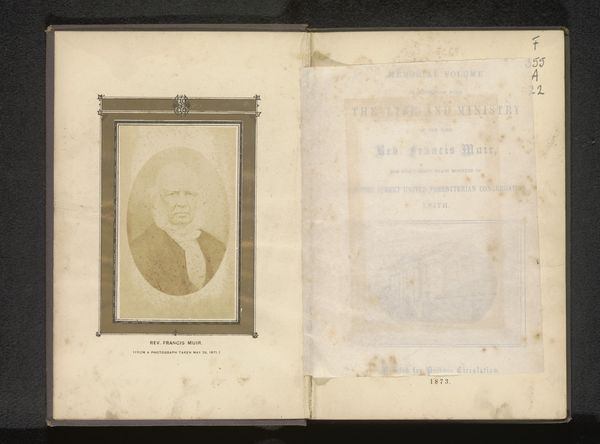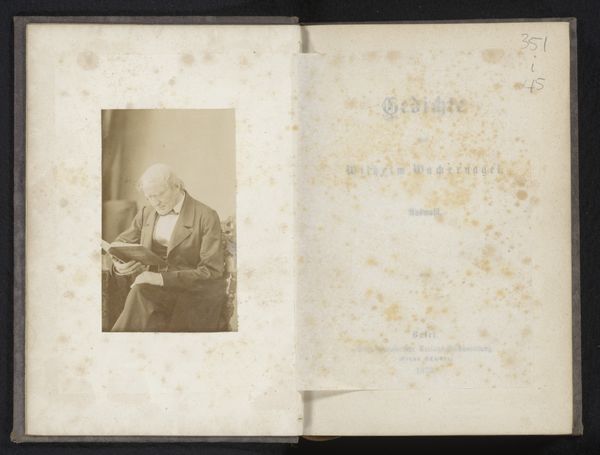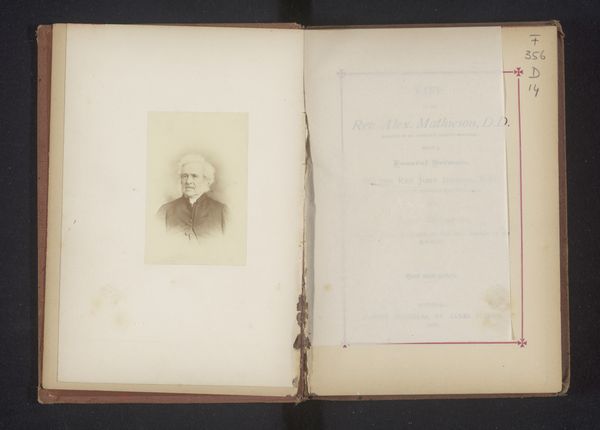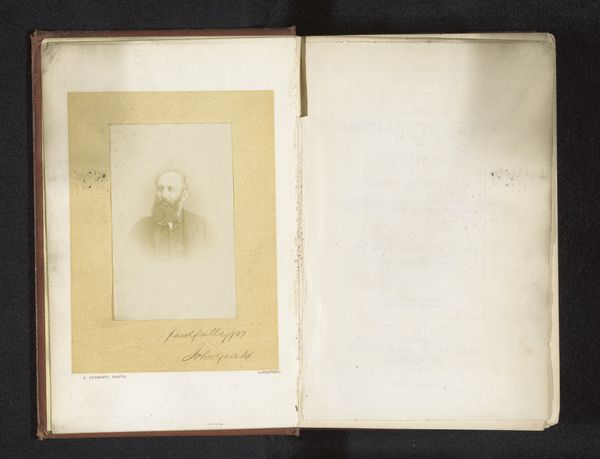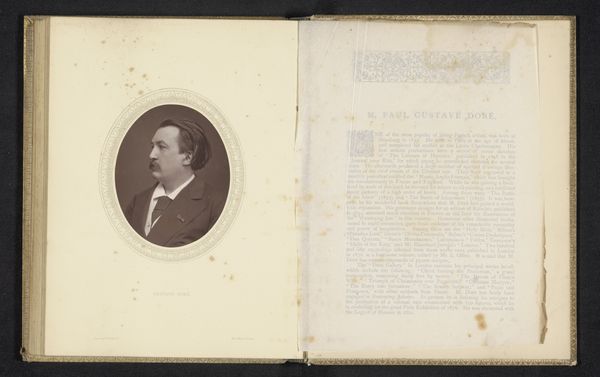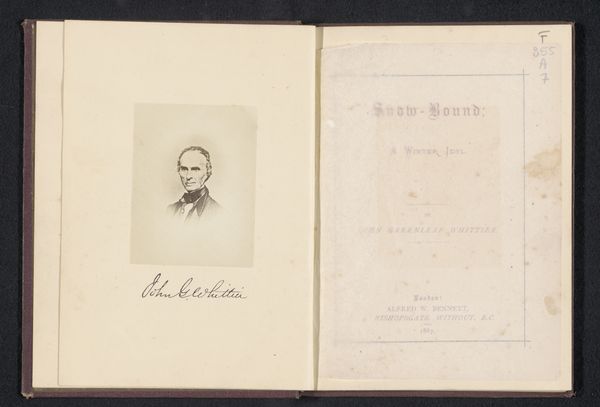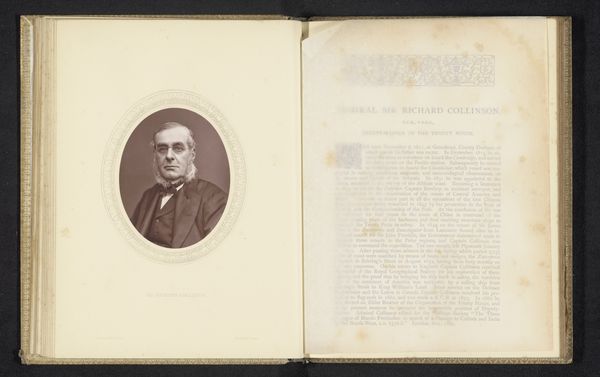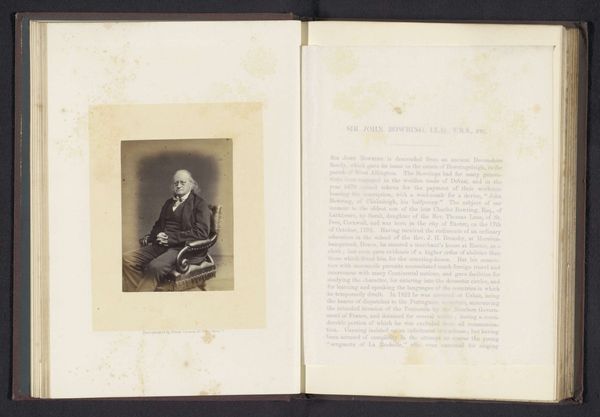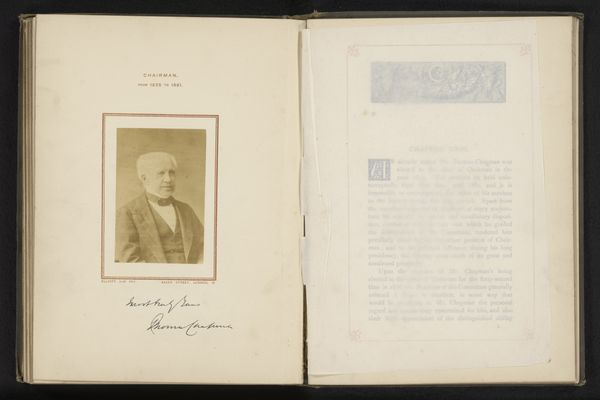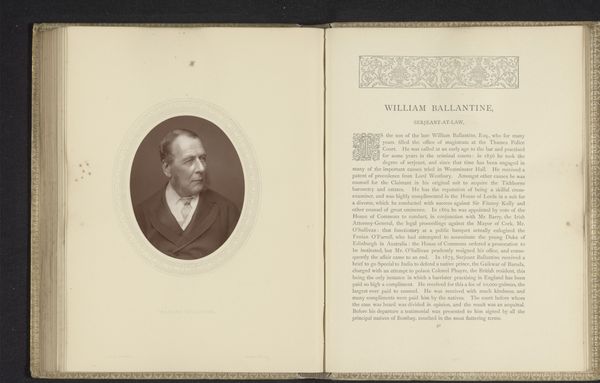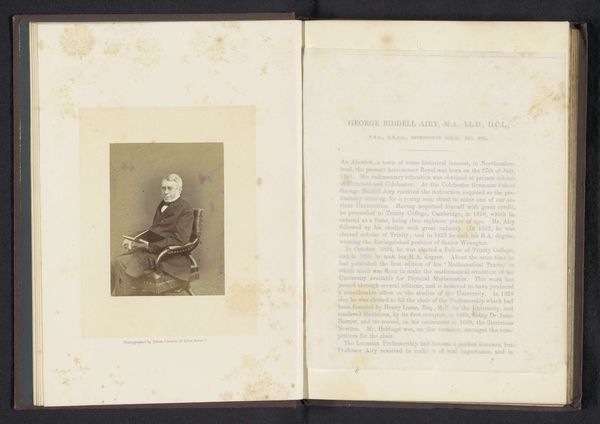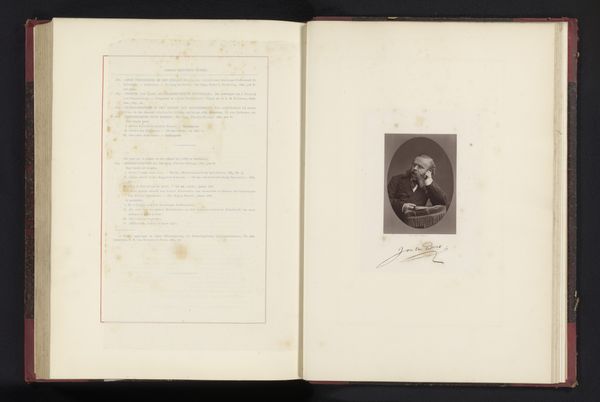
print, photography
#
portrait
# print
#
photography
#
realism
Dimensions: height 120 mm, width 82 mm
Copyright: Rijks Museum: Open Domain
Editor: This is a photograph and print titled "Portret van Arthur Schopenhauer," created before 1877 by an anonymous artist. It seems to be part of a larger book. The sepia tone gives it a very antique, serious mood. What historical context is crucial for understanding its impact? Curator: The very act of depicting Schopenhauer in this format – bound within a book, readily accessible – speaks volumes about the dissemination of his philosophy and its engagement with a wider public. What power structures might have influenced access to Schopenhauer’s writings, and how would the book have reached different audiences based on class, gender, or social status? Consider the rise of mass media and the printed image during this period. Who controlled the image of philosophers then, and who controls the image of philosophers now? Editor: So, it's less about Schopenhauer as an individual and more about what the book represents? The access and consumption of ideas? Curator: Precisely. The portrait is of course important. What messages might an artist seek to convey through Schopenhauer's likeness, and for what potential audience? For example, does the oval framing of his portrait have significance for the historical presentation of masculine philosophers in particular, and what ideological messages do these forms carry? Editor: I see. The framing and book format place him within a particular intellectual and social sphere. Thank you for broadening my perspective! Curator: My pleasure. Considering the intersection of philosophy, representation, and social access allows us a richer understanding of both the artwork and its impact.
Comments
No comments
Be the first to comment and join the conversation on the ultimate creative platform.
